Jazz and the Blues
The main types of music in the Harlem Renaissance were Jazz and the Blues. Harlem took in the music, their style, their sound and spit them back out into the world as a completely different sound. They recreated the music and, instead of conforming to the typical music in those days to ensure that their music would become popular, they took a chance and made it fit their lifestyles, their stories. Music in Harlem would have a great effect not only on future musicians but also on all music itself.
This is Fletcher Henderson with "Hop Off 1928 Bruns. 4119"
Fletcher Henderson (1897-1952)
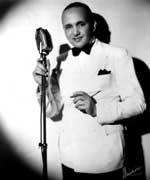
Fletcher Henderson had originally intended to be a chemist when he first came to Harlem intending to realize that dream. However, positions like this were not yet common among African Americans which turned out to be a good thing for Henderson and Jazz. Because Henderson couldn’t find any work in the chemistry area, he took piano playing gigs to get money. He became a well known musician while doing this and eventually created a new sound that livened up Jazz with his very own orchestra. With his new sound he gained many people’s respect of Jazz and inspired future musicians to create their own sound.
Bessie Smith with "I'm Wild About That Thing"
Bessie Smith (1894-1937)

Bessie Smith was a wonderful singer and was often described as the most talented black female singer of her time. She had originally started her career as a street performer where she was eventually noticed and asked to sing for a traveling show. She was discovered by a bigger company and sought out to create her first song Down Hearted Blues. She had a very successful career until it was ruined by her alcoholism. Sometime in her life she was driven to alcohol- whether from stress related to show business or from racial discrimination or from an entirely different issue is unknown. She was just beginning to recover from the damage done to her career when she was in a car accident and died. Though her career ended in ruin, she left a lasting impression on Jazz and the Blues.
Duke Ellington with "It Don't Mean A Thing"
Duke Ellington (1899-1974)
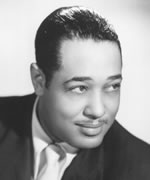
Duke Ellington had already started his music career and moved to New York City not to become successful or to begin a career but to popularize an one that already existed. And that he did. Ellington fit right into the hustle and bustle that was New York City. He himself was almost always on the run too- to concerts, Broadway shows that he was in, movies he made an appearance in. In no time he was all over the town and was leaping boundaries between white’s and black’s. His music was so widely popular that some places even eliminated the ban of African Americans just so that they could have him play there for a night. Needless to say, he is widely remembered even to this day as a great musician.
Cab Calloway with "Reefer Man"
Cab Calloway (1907-1994)
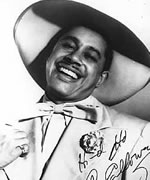
Cab Calloway was a vocalist and a bandleader with a sense of humor and a style of his own. He created his music using meaningless and fun lyrics and often let the crowd join the song too. He picked up some of Harlem’s street slang to add a touch of home to his music then sent it off to New York City. Like Duke Ellington, Calloway wasn’t limited to street performances and concerts. He also appeared in movies, on Broadway, in nightclubs. His music was everywhere! People enjoyed his style because it was a good way to pick up the mood and ensure that everyone had a good time. Calloway created music that would entertain long after he was gone!
Chick Webb with "Harlem Congo"
Chick Webb (1909-1939)
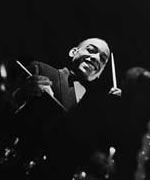
Long ago, a little African American boy with a big dream was diagnosed with tuberculosis in his spine. This little boy’s dream was to grow up and be a great drummer and musician among the African American population. However, growing up, this boy faced many difficulties that showed that he would never be like other musicians. Little did he know that he would be better, greater than they ever were. This little boy grew up to be Chick Webb, a drummer that left his beat all over Harlem and Jazz. Though he was hindered often by his tuberculosis, with a couple of special drums and a good ear for the next big hit he was on his way to becoming one of the greatest musicians in the Harlem Renaissance.
James P. Johnson with "Carolina Shout"
James P. Johnson (1894-1955)
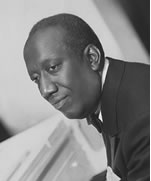
Ever heard of something called Stride Style? If so then you may have heard of James P. Johnson who was perhaps one of the best pianists of Stride Style there ever was. Stride Style is a type of music that first arose around the time of the Harlem Renaissance. It was a unique type of music- carefully planned but sounding careless and fun, intricate but looking fun and easy. Johnson seemed to be especially good at this and after a while of being the pianist, he began to write his own songs. Johnson sung anywhere and everywhere and his fun and easygoing music was heard all over Harlem in no time. He definitely left his mark on Harlem and Stride Style.
William Grant Still with the "Afro- American Orchestra"
William Grant Still (1895-1978)
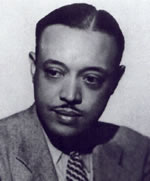
William Grant Still was one of the greatest composers and conductors of the Harlem Renaissance. He originally set out in the medical field but soon found that this was not the job for him. Though his greatest achievements were formed by his composing skills, he was not untalented in other aspects of music. Still knew how to play every instrument in the orchestra- and well. He was multitalented and well known in Harlem and among African Americans and his music inspired many musicians of the time.
